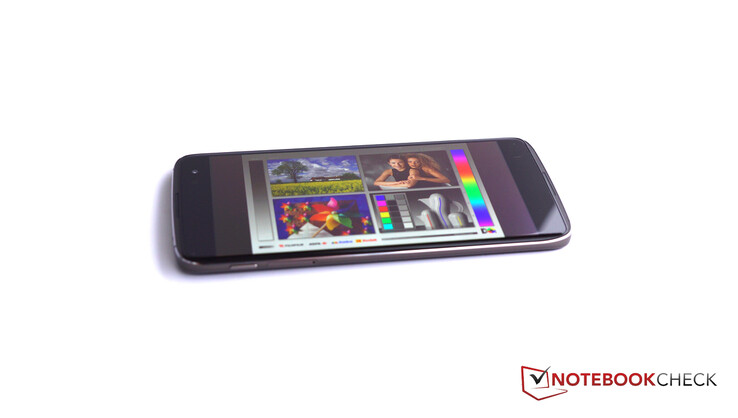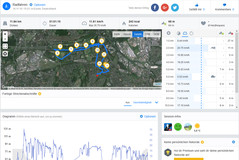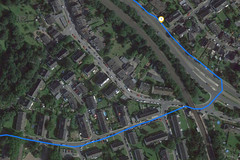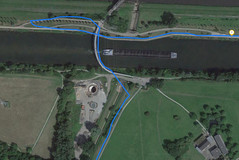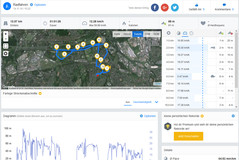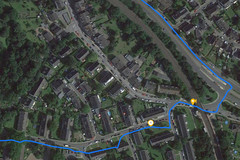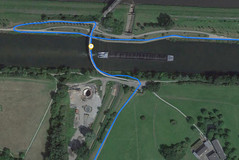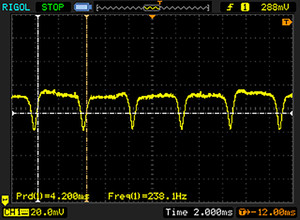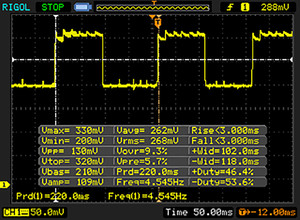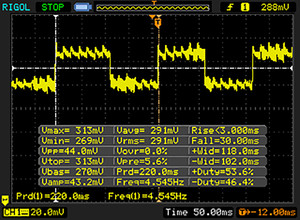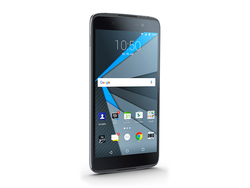Breve Análise do Smartphone BlackBerry DTEK60
Os Top 10
» Os Top 10 Portáteis Multimídia
» Os Top 10 Portáteis de Jogos
» Os Top 10 Portáteis Leves para Jogos
» Os Top 10 Portáteis Acessíveis de Escritório/Empresariais
» Os Top 10 Portáteis Premium de Escritório/Empresariais
» Os Top 10 dos Portáteis Workstation
» Os Top 10 Subportáteis
» Os Top 10 Ultrabooks
» Os Top 10 Conversíveis
» Os Top 10 Tablets
» Os Top 10 Smartphones
» A melhores Telas de Portáteis Analisadas Pela Notebookcheck
» Top 10 dos portáteis abaixo dos 500 Euros da Notebookcheck
» Top 10 dos Portáteis abaixo dos 300 Euros
Size Comparison
| Networking | |
| iperf3 transmit AX12 | |
| Google Pixel XL 2016 | |
| Samsung Galaxy S7 Edge | |
| OnePlus 3 | |
| BlackBerry DTEK60 | |
| iperf3 receive AX12 | |
| Google Pixel XL 2016 | |
| OnePlus 3 | |
| BlackBerry DTEK60 | |
| Samsung Galaxy S7 Edge | |
| |||||||||||||||||||||||||
iluminação: 88 %
iluminação com acumulador: 590 cd/m²
Contraste: ∞:1 (Preto: 0 cd/m²)
ΔE ColorChecker Calman: 6.6 | ∀{0.5-29.43 Ø4.78}
ΔE Greyscale Calman: 4.3 | ∀{0.09-98 Ø5}
Gamma: 1.88
CCT: 6966 K
| BlackBerry DTEK60 AMOLED, 2560x1440, 5.5" | Google Pixel XL 2016 AMOLED, 2560x1440, 5.5" | OnePlus 3 Optic-AMOLED, 1920x1080, 5.5" | Apple iPhone 7 Plus IPS, 1920x1080, 5.5" | Huawei P9 Plus AMOLED, 1920x1080, 5.5" | Samsung Galaxy S7 Edge Super AMOLED, 2560x1440, 5.5" | |
|---|---|---|---|---|---|---|
| Screen | 4% | 2% | 37% | -9% | 34% | |
| Brightness middle (cd/m²) | 590 | 402 -32% | 419 -29% | 557 -6% | 361 -39% | 554 -6% |
| Brightness (cd/m²) | 608 | 408 -33% | 431 -29% | 553 -9% | 366 -40% | 552 -9% |
| Brightness Distribution (%) | 88 | 85 -3% | 84 -5% | 97 10% | 87 -1% | 96 9% |
| Black Level * (cd/m²) | 0.35 | |||||
| Colorchecker dE 2000 * | 6.6 | 4 39% | 4.1 38% | 1.4 79% | 5.1 23% | 1.59 76% |
| Colorchecker dE 2000 max. * | 14.3 | 10.1 29% | 12 16% | 3.1 78% | 10 30% | 2.56 82% |
| Greyscale dE 2000 * | 4.3 | 3.2 26% | 3.3 23% | 1.3 70% | 5.5 -28% | 2.01 53% |
| Gamma | 1.88 117% | 2.19 100% | 2.1 105% | 2.21 100% | 2.24 98% | 2.01 109% |
| CCT | 6966 93% | 7037 92% | 6550 99% | 6667 97% | 7388 88% | 6321 103% |
| Color Space (Percent of AdobeRGB 1998) (%) | 89.38 | 63.1 | 82.12 | |||
| Color Space (Percent of sRGB) (%) | 100 | 99.83 | 99.98 | |||
| Contrast (:1) | 1591 |
* ... menor é melhor
Cintilação da tela / PWM (modulação por largura de pulso)
| Tela tremeluzindo/PWM detectado | 238.1 Hz | ≤ 100 % configuração de brilho | |
A luz de fundo da tela pisca em 238.1 Hz (pior caso, por exemplo, utilizando PWM) Cintilação detectada em uma configuração de brilho de 100 % e abaixo. Não deve haver cintilação ou PWM acima desta configuração de brilho. A frequência de 238.1 Hz é relativamente baixa, portanto, usuários sensíveis provavelmente notarão cintilação e sentirão fadiga ocular na configuração de brilho indicada e abaixo. [pwm_comparison] Em comparação: 53 % de todos os dispositivos testados não usam PWM para escurecer a tela. Se PWM foi detectado, uma média de 8118 (mínimo: 5 - máximo: 343500) Hz foi medida. | |||
Exibir tempos de resposta
| ↔ Tempo de resposta preto para branco | ||
|---|---|---|
| 6 ms ... ascensão ↗ e queda ↘ combinadas | ↗ 3 ms ascensão | |
| ↘ 3 ms queda | ||
| A tela mostra taxas de resposta muito rápidas em nossos testes e deve ser muito adequada para jogos em ritmo acelerado. Em comparação, todos os dispositivos testados variam de 0.1 (mínimo) a 240 (máximo) ms. » 17 % de todos os dispositivos são melhores. Isso significa que o tempo de resposta medido é melhor que a média de todos os dispositivos testados (20.2 ms). | ||
| ↔ Tempo de resposta 50% cinza a 80% cinza | ||
| 33 ms ... ascensão ↗ e queda ↘ combinadas | ↗ 3 ms ascensão | |
| ↘ 30 ms queda | ||
| A tela mostra taxas de resposta lentas em nossos testes e será insatisfatória para os jogadores. Em comparação, todos os dispositivos testados variam de 0.165 (mínimo) a 636 (máximo) ms. » 43 % de todos os dispositivos são melhores. Isso significa que o tempo de resposta medido é semelhante à média de todos os dispositivos testados (31.6 ms). | ||
| AnTuTu v6 - Total Score (classificar por valor) | |
| BlackBerry DTEK60 | |
| Google Pixel XL 2016 | |
| OnePlus 3 | |
| Apple iPhone 7 Plus | |
| Huawei P9 Plus | |
| Samsung Galaxy S7 Edge | |
| Geekbench 4.0 | |
| 64 Bit Single-Core Score (classificar por valor) | |
| BlackBerry DTEK60 | |
| Google Pixel XL 2016 | |
| OnePlus 3 | |
| Apple iPhone 7 Plus | |
| Samsung Galaxy S7 Edge | |
| 64 Bit Multi-Core Score (classificar por valor) | |
| BlackBerry DTEK60 | |
| Google Pixel XL 2016 | |
| OnePlus 3 | |
| Apple iPhone 7 Plus | |
| Samsung Galaxy S7 Edge | |
| PCMark for Android - Work performance score (classificar por valor) | |
| BlackBerry DTEK60 | |
| Google Pixel XL 2016 | |
| OnePlus 3 | |
| Huawei P9 Plus | |
| Samsung Galaxy S7 Edge | |
| Octane V2 - Total Score (classificar por valor) | |
| BlackBerry DTEK60 | |
| Google Pixel XL 2016 | |
| OnePlus 3 | |
| Apple iPhone 7 Plus | |
| Huawei P9 Plus | |
| Samsung Galaxy S7 Edge | |
| Mozilla Kraken 1.1 - Total (classificar por valor) | |
| BlackBerry DTEK60 | |
| Google Pixel XL 2016 | |
| OnePlus 3 | |
| Apple iPhone 7 Plus | |
| Huawei P9 Plus | |
| Samsung Galaxy S7 Edge | |
| WebXPRT 2015 - Overall (classificar por valor) | |
| BlackBerry DTEK60 | |
| Google Pixel XL 2016 | |
| OnePlus 3 | |
| Apple iPhone 7 Plus | |
| Huawei P9 Plus | |
| Samsung Galaxy S7 Edge | |
| JetStream 1.1 - Total Score (classificar por valor) | |
| BlackBerry DTEK60 | |
| Google Pixel XL 2016 | |
| OnePlus 3 | |
| Apple iPhone 7 Plus | |
| Huawei P9 Plus | |
| Samsung Galaxy S7 Edge | |
* ... menor é melhor
| AndroBench 3-5 | |
| Sequential Read 256KB (classificar por valor) | |
| BlackBerry DTEK60 | |
| Google Pixel XL 2016 | |
| OnePlus 3 | |
| Huawei P9 Plus | |
| Samsung Galaxy S7 Edge | |
| Sequential Write 256KB (classificar por valor) | |
| BlackBerry DTEK60 | |
| Google Pixel XL 2016 | |
| OnePlus 3 | |
| Huawei P9 Plus | |
| Samsung Galaxy S7 Edge | |
| Random Read 4KB (classificar por valor) | |
| BlackBerry DTEK60 | |
| Google Pixel XL 2016 | |
| OnePlus 3 | |
| Huawei P9 Plus | |
| Samsung Galaxy S7 Edge | |
| Random Write 4KB (classificar por valor) | |
| BlackBerry DTEK60 | |
| Google Pixel XL 2016 | |
| OnePlus 3 | |
| Huawei P9 Plus | |
| Samsung Galaxy S7 Edge | |
| Sequential Read 256KB SDCard (classificar por valor) | |
| BlackBerry DTEK60 | |
| Huawei P9 Plus | |
| Samsung Galaxy S7 Edge | |
| Sequential Write 256KB SDCard (classificar por valor) | |
| BlackBerry DTEK60 | |
| Huawei P9 Plus | |
| Samsung Galaxy S7 Edge | |
(±) A temperatura máxima no lado superior é 42.6 °C / 109 F, em comparação com a média de 35.2 °C / 95 F , variando de 21.9 a 247 °C para a classe Smartphone.
(±) A parte inferior aquece até um máximo de 42.5 °C / 109 F, em comparação com a média de 34 °C / 93 F
(+) Em uso inativo, a temperatura média para o lado superior é 28.4 °C / 83 F, em comparação com a média do dispositivo de 32.9 °C / ### class_avg_f### F.
BlackBerry DTEK60 análise de áudio
(+) | os alto-falantes podem tocar relativamente alto (###valor### dB)
Graves 100 - 315Hz
(-) | quase nenhum baixo - em média 21.5% menor que a mediana
(±) | a linearidade dos graves é média (8.6% delta para a frequência anterior)
Médios 400 - 2.000 Hz
(±) | médios mais altos - em média 5.4% maior que a mediana
(+) | médios são lineares (5.8% delta para frequência anterior)
Altos 2 - 16 kHz
(±) | máximos mais altos - em média 6.5% maior que a mediana
(+) | os máximos são lineares (5.2% delta da frequência anterior)
Geral 100 - 16.000 Hz
(±) | a linearidade do som geral é média (22% diferença em relação à mediana)
Comparado com a mesma classe
» 45% de todos os dispositivos testados nesta classe foram melhores, 7% semelhantes, 48% piores
» O melhor teve um delta de 11%, a média foi 35%, o pior foi 134%
Comparado com todos os dispositivos testados
» 63% de todos os dispositivos testados foram melhores, 7% semelhantes, 31% piores
» O melhor teve um delta de 4%, a média foi 24%, o pior foi 134%
OnePlus 3 análise de áudio
(+) | os alto-falantes podem tocar relativamente alto (###valor### dB)
Graves 100 - 315Hz
(-) | quase nenhum baixo - em média 30.9% menor que a mediana
(±) | a linearidade dos graves é média (11.3% delta para a frequência anterior)
Médios 400 - 2.000 Hz
(+) | médios equilibrados - apenas 4.2% longe da mediana
(+) | médios são lineares (4.9% delta para frequência anterior)
Altos 2 - 16 kHz
(±) | máximos mais altos - em média 5.6% maior que a mediana
(+) | os máximos são lineares (3.2% delta da frequência anterior)
Geral 100 - 16.000 Hz
(±) | a linearidade do som geral é média (21.8% diferença em relação à mediana)
Comparado com a mesma classe
» 44% de todos os dispositivos testados nesta classe foram melhores, 8% semelhantes, 48% piores
» O melhor teve um delta de 11%, a média foi 35%, o pior foi 134%
Comparado com todos os dispositivos testados
» 61% de todos os dispositivos testados foram melhores, 7% semelhantes, 32% piores
» O melhor teve um delta de 4%, a média foi 24%, o pior foi 134%
Apple iPhone 7 Plus análise de áudio
(±) | o volume do alto-falante é médio, mas bom (###valor### dB)
Graves 100 - 315Hz
(-) | quase nenhum baixo - em média 24.1% menor que a mediana
(±) | a linearidade dos graves é média (7.4% delta para a frequência anterior)
Médios 400 - 2.000 Hz
(+) | médios equilibrados - apenas 4.7% longe da mediana
(±) | a linearidade dos médios é média (7.6% delta para frequência anterior)
Altos 2 - 16 kHz
(+) | agudos equilibrados - apenas 4.3% longe da mediana
(+) | os máximos são lineares (6.9% delta da frequência anterior)
Geral 100 - 16.000 Hz
(±) | a linearidade do som geral é média (22% diferença em relação à mediana)
Comparado com a mesma classe
» 45% de todos os dispositivos testados nesta classe foram melhores, 7% semelhantes, 48% piores
» O melhor teve um delta de 11%, a média foi 35%, o pior foi 134%
Comparado com todos os dispositivos testados
» 63% de todos os dispositivos testados foram melhores, 7% semelhantes, 31% piores
» O melhor teve um delta de 4%, a média foi 24%, o pior foi 134%
| desligado | |
| Ocioso | |
| Carga |
|
Key:
min: | |
| BlackBerry DTEK60 3000 mAh | Google Pixel XL 2016 3450 mAh | OnePlus 3 3000 mAh | Apple iPhone 7 Plus 2915 mAh | Huawei P9 Plus 3400 mAh | Samsung Galaxy S7 Edge 3600 mAh | |
|---|---|---|---|---|---|---|
| Power Consumption | 17% | -1% | -28% | 7% | 5% | |
| Idle Minimum * (Watt) | 0.7 | 0.53 24% | 0.57 19% | 0.77 -10% | 0.87 -24% | 0.63 10% |
| Idle Average * (Watt) | 1.13 | 1.07 5% | 1.24 -10% | 2.04 -81% | 1.2 -6% | 1.1 3% |
| Idle Maximum * (Watt) | 1.2 | 1.12 7% | 1.36 -13% | 2.24 -87% | 1.27 -6% | 1.56 -30% |
| Load Average * (Watt) | 6.52 | 5.53 15% | 5.92 9% | 4.69 28% | 4.69 28% | 5.95 9% |
| Load Maximum * (Watt) | 9.75 | 6.26 36% | 10.53 -8% | 8.66 11% | 5.63 42% | 6.7 31% |
* ... menor é melhor
| BlackBerry DTEK60 3000 mAh | Google Pixel XL 2016 3450 mAh | OnePlus 3 3000 mAh | Apple iPhone 7 Plus 2915 mAh | Huawei P9 Plus 3400 mAh | Samsung Galaxy S7 Edge 3600 mAh | |
|---|---|---|---|---|---|---|
| Duração da bateria | -17% | 9% | 4% | -2% | 28% | |
| Reader / Idle (h) | 22.6 | 22.2 -2% | 22.3 -1% | 30.6 35% | 24.1 7% | 27.7 23% |
| H.264 (h) | 13.5 | 8.4 -38% | 14.1 4% | 13.6 1% | 12.9 -4% | 15.2 13% |
| WiFi v1.3 (h) | 13 | 8.4 -35% | 14 8% | 9.8 -25% | 8.8 -32% | 12.2 -6% |
| Load (h) | 3.6 | 3.8 6% | 4.5 25% | 3.8 6% | 4.4 22% | 6.5 81% |
Pro
Contra
Aprendendo de seus recentes erros, a BlackBerry introduz o novo DTEK60, que oferece um smartphone mais adequado a um preço razoável. O recurso estrela do produto são suas melhorias na segurança, que na era dos ataques cibernéticos é fundamental, tanto para empresas como para usuários privados.
Que a empresa tenha transicionado para Android - optando por não usar mais o seu próprio SO - pode decepcionar aos puristas e fanáticos, mas é um movimento razoável, particularmente em vista da rápida queda da marca no mercado. A BlackBerry faz modificações pequenas no SO nativo, oferecendo pouco bloatware e apenas algumas melhorias bem implementadas.
O telefone por si mesmo oferece um desempenho que sem dúvida é de gama alta, uma carcaça sólida e atraente, e um volume impressionantes do alto falante. Além disso, a bateria é completamente apta para seu uso durante o dia todo, as câmeras tiram fotos de qualidade e a tela AMOLED muito brilhante com sua notável cobertura de cores, é um verdadeiro destaque.
Por outro lado, a velocidade de acesso da memória e do Wi-Fi poderiam ser mais velozes, mas esse é um problema menor. Mais preocupante é o uso limitado de alguns aplicativos, dado que as medidas de segurança aprimoradas tendem a restringir as permissões necessárias, resultando em que alguns programas falhem.
O DTEK60, de fato, tem o potencial de se tornar o bote salva-vidas para a BlackBerry, dado que empresa entrega um aparelho bem equipado a um preço razoável com uma série de destaques.
Além dos mercado corporativo, este smartphone também pode atrair consumidores individuais, particularmente aqueles que procuram recursos multimídia respeitáveis junto com segurança extra. Depois das ofertas pouco espetaculares da BlackBerry do últimos anos, as coisas definitivamente estão melhorando com o lançamento do DTEK60 – resta ver se isso irá se refletir na melhoria das vendas.
BlackBerry DTEK60
- 12/05/2016 v5.1 (old)
Florian Wimmer




